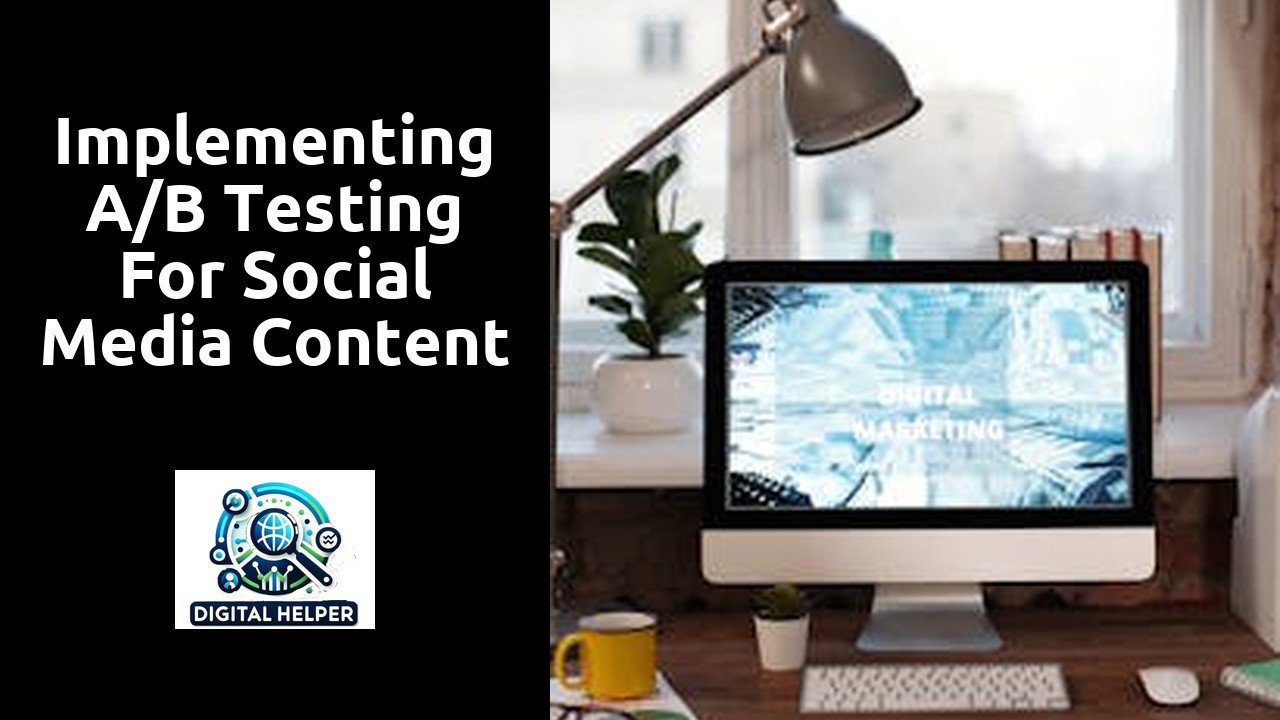Implementing A/B Testing for Social Media Content
Table Of Contents
Implementing Changes Based on A/B Test Results
After conducting A/B testing on your social media content, it’s time to analyze the results and implement the necessary changes to optimize your strategy. One of the key steps in this process is to carefully review the data gathered from the tests and identify the elements that led to better performance. Whether it’s the use of a particular image, a call-to-action phrase, or the timing of your posts, pinpointing these successful elements is crucial for refining your content approach.
Once you have identified the winning components from your A/B tests, it’s essential to incorporate them into your regular content strategy. By integrating these successful elements into your ongoing social media posts, you can potentially enhance engagement, increase conversions, and strengthen your brand presence online. Remember, the goal of A/B testing is not just to see which version performs better temporarily, but to leverage those insights for long-term improvement in your content strategy.
Incorporating successful elements into regular content strategy
After conducting A/B tests on your social media content, it is crucial to incorporate successful elements into your regular content strategy. By identifying which variations resonated best with your audience, you can refine your overall content approach to align more closely with what engages and attracts your followers. This iterative process of learning from A/B tests and integrating those lessons into your ongoing content strategy is fundamental to driving continuous improvement and maintaining relevance in the ever-evolving social media landscape.
Successful elements from your A/B tests should not be viewed in isolation but rather as building blocks for enhancing your overall content strategy. By incorporating these winning components into your regular content plan, you can leverage the insights gained to create more impactful and engaging posts consistently. Whether it’s the use of specific visuals, messaging tone, or post timing, integrating the successful elements identified through A/B testing allows you to optimize your content strategy for better audience engagement and ultimately achieve your social media marketing goals.
Monitoring Performance Post A/B Testing
After completing the A/B testing phase, it is essential to shift focus towards monitoring the performance of the implemented changes. This stage is crucial in determining the long-term effectiveness of the alterations made based on the test results. By keeping a watchful eye on how the audience interacts with the modified content, marketers can gain valuable insights into what resonates best with their target demographic.
Consistent monitoring of key performance indicators post-A/B testing allows for a comprehensive analysis of the impact of the implemented changes. By tracking metrics such as engagement rate, click-through rate, conversion rate, and overall reach, marketers can gauge the success of the variations and make data-driven decisions for future content strategies. Continuously evaluating the performance post-A/B testing enables marketers to adapt strategies in real-time, ensuring sustained improvements and optimal outcomes in social media marketing campaigns.
Tracking ongoing metrics to ensure sustained improvements
Tracking ongoing metrics is essential in ensuring that the improvements made through A/B testing are sustained over time. By consistently monitoring key performance indicators, social media marketers can gauge the long-term impact of the changes implemented based on the test results. This allows for adjustments to be made in real-time, ensuring that the content strategy remains effective and aligned with the overall marketing goals.
Regularly tracking metrics such as engagement rates, click-through rates, and conversion rates provides valuable insights into the effectiveness of the content being shared on social media platforms. By analyzing these metrics over time, marketers can identify trends, patterns, and areas for improvement. This data-driven approach allows for continuous optimization of content strategy, leading to sustained improvements in audience engagement and overall performance on social media channels.
Best Practices for A/B Testing in Social Media Marketing
A crucial aspect of successful social media marketing is utilizing A/B testing efficiently to optimize content performance. One best practice is to clearly define the goal of each test before implementation. Whether aiming to increase engagement, click-through rates, or conversions, having a specific objective will guide the testing process effectively. Additionally, ensure that only one variable is changed per test to accurately attribute any improvements or declines in performance to that specific element.
Another key practice is to conduct tests on a consistent basis to continuously refine content strategies. By running frequent tests, marketers can gather valuable insights into audience preferences and trends, enabling them to adapt their approaches promptly. Moreover, analyzing the results of each test meticulously is vital to extracting actionable data that informs future content decisions. By following these best practices, businesses can leverage A/B testing to enhance their social media presence and drive impactful results.
Tips for conducting efficient and effective tests for optimal results
To conduct efficient and effective A/B tests for optimal results in social media marketing, it is crucial to start by clearly defining the specific objectives of the test. Setting clear goals will help focus the test and ensure that relevant metrics are tracked accurately to measure success. Moreover, it is essential to identify the variables to be tested and stick to one variable at a time to obtain conclusive results.
Furthermore, ensure that your test sample size is statistically significant to draw meaningful conclusions. A small sample size may not provide accurate insights, while an excessively large sample size may lead to unnecessary costs and time expenditure. Additionally, always ensure that the test is run for a long enough duration to capture variations in audience behavior and eliminate any outliers that could skew the results.
